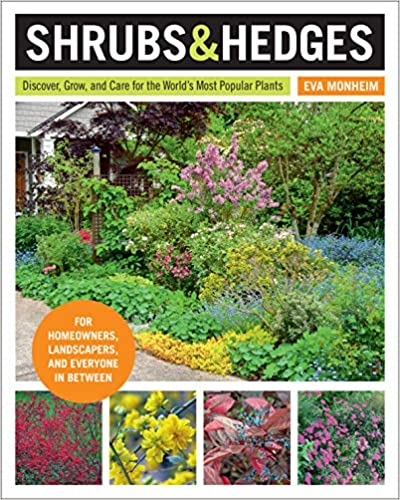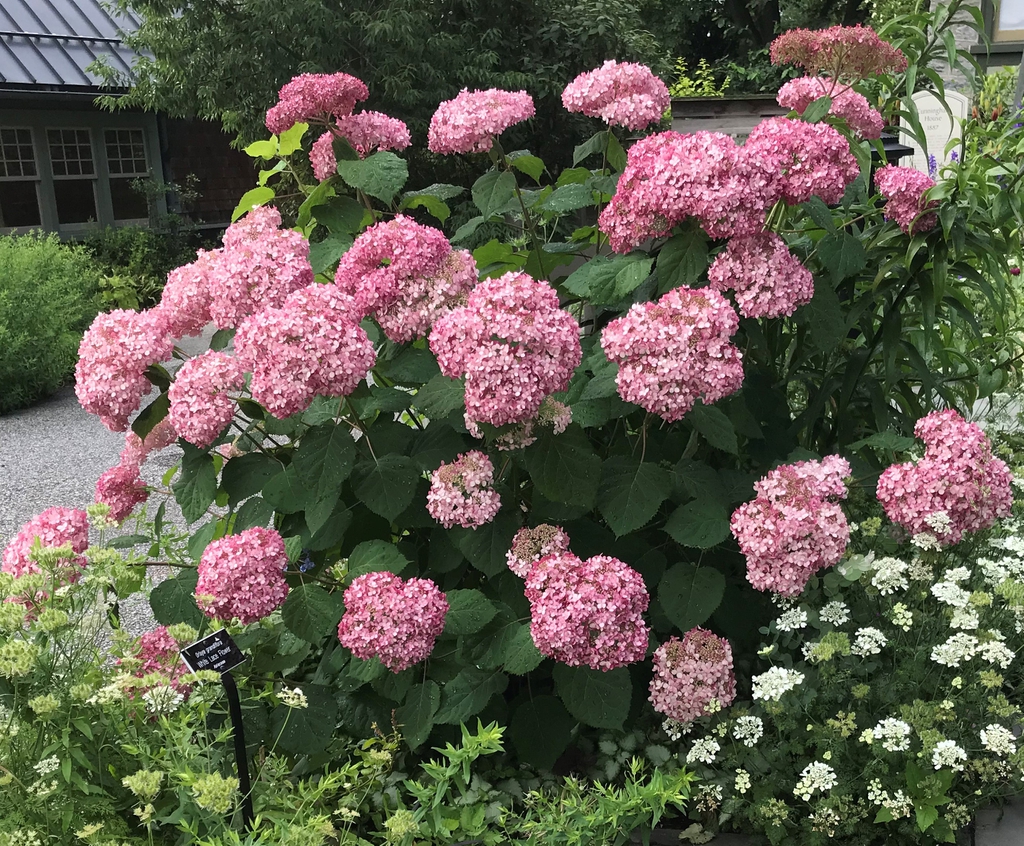Hurrah for Shrubs
By George Graine, Fairfax Master Gardener
 “Half the interest of a garden is the constant exercise of the imagination.”
“Half the interest of a garden is the constant exercise of the imagination.”
—Mrs. C. W. Earle in “Pot-Pourri from a Surrey Garden” (1897)
When you arrived at the garden center or the box store and came upon an abundance of shrubs, did you experience an overwhelming feeling of frustration? Did you have a queasy feeling of being overwhelmed when compared to looking at pots of “pick-me-up and buy me” pretty flowers? Do not fret any more. Help is on the way with a new book called “Shrubs & Hedges” by Eva Monheim (Cool Springs Press, 2020). This is an up-to-date treatise on the subject and the sub-title should help to acknowledge most of your concerns because you will “Discover, Grow, and Care for the World’s Most Popular Plants.” That is a lot of ground to cover, and you will see how below.
Let’s begin. Monheim clearly covers the full spectrum of the why and how of shrubs and hedges as she removes the mystique of these plants and shows how they will enhance your landscape. Furthermore, shrubs have so much to offer in the landscape because they serve a variety of purposes, not the least of which is beauty. She will help you visualize and incorporate some of your own ideas into reality. Shrubs also provide a “bonus” because many change colors with the seasons and, of course, some will flower depending on your shrub of choice. The rationale for choosing shrubs is clearly explained in the introductory chapter of the book. Upon reading this material you might find your head bobbing up and down in agreement. You might even wonder why you limited incorporating these stalwart plants in your landscape. The author makes a very telling case for this family of plants that is both inspirational and understandable and without resorting to horticultural jargon. Perhaps, even more important, she is clear about why you will not regret planting shrubs as they are the perfect plant.
Between the covers of this 200+ page book are many color photos, illustrations and charts. This is definitely not a coffee table book. Reading this book in a methodical manner, you most likely will come away with an appreciation of shrubs. Why? Because you will learn so many things that perhaps you did not previously consider. The book, written as a building block of progressive steps, will make you aware that shrubs are an absolute necessity for the “finished” landscape (even though many gardeners know that a landscape is often a work in progress). Perhaps a better and more exciting title for the book could have been something like “Shrubs — A Necessary Journey for Landscaping” but let’s not get too poetic. The reason to have shrubs in your landscape is because they are a connection between trees and all of your other plants. Shrubs are extremely variable! Consider the numerous sizes (height and width), shape, texture and color. You will then realize that shrubs are without a doubt a perfect need and fit in a landscape.

Hydrangea Arborescens, a Native Flowering Shrub
A chapter called “Tailored to Fit — Designing with Shrubs,” although short on pages, will help you realize and consider the practical side for your design as well as designing with seasonal changes as noted previously. Also true is the need to consider the time factor because, just as with other plants, maintenance (although generally minimal), is a factor that should be considered. In other words, consider how to reduce overall maintenance while at the same time provide visual interest. With this in mind, you should be able to create a landscape that is both personal, functional and will provide you with abundant pleasure.
And now if you are ambitious, consider trying to propagate some of your own plants. You might experiment for your own enjoyment and if successful, have pass-along plants to share with other gardeners. Think of propagation as “the art and science that allows for reproductive activity.” Note that propagating plants will add to your understanding of why shrubs cost so much more than perennial plants. Time and nurturing new plants over several years, before they reach the retail trade, is the reason these plants are pricier when compared to perennial plants.
Not to be forgotten is a chapter on hedges and hedgerows. It is false to believe that these are synonymous words. The hedgerows of yesteryear are wonderful if you have space that permits. In just a few words, growing a hedgerow is a fine landscaping practice because hedgerows are grown as a wild natural boundary. On the other hand, hedges are often treated as neat barriers, as for example, between your property and the one adjacent. Another form of hedge is grown as whimsical and sculptural plants. An example is Disney-like living sculpture. Some full service garden centers carry fanciful topiary designs that truly make a statement in your landscape. You may be surprised to know that topiary is not a new horticultural phenomenon. In fact, the first book on the subject was published in 1904 (not a typo) by Charles H. Curtis was “The Book of Topiary.”
To summarize, in recent years and with more to come, the green industry has provided homeowners with a wide diversity of plant material. In addition to “basic” landscaping, Monheim incorporates, albeit in limited pages, discussions on some unique growing areas such as ponds, rain gardens, hillsides and more. The color photos and charts are sure to enhance your understanding for these growing conditions. “Shrubs & Hedges” should be your go-to book now and for years to come. It is an excellent data base because it will probably answer many of your questions. The book is filled with information and tips that will hold your attention even if you are an experienced gardener. For those who have gardened for a long time, you may be surprised to learn about many facets of gardening skills and “knowledges” that will improve even the most ardent gardener.